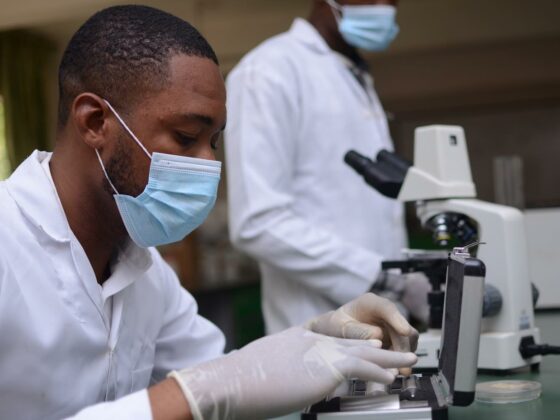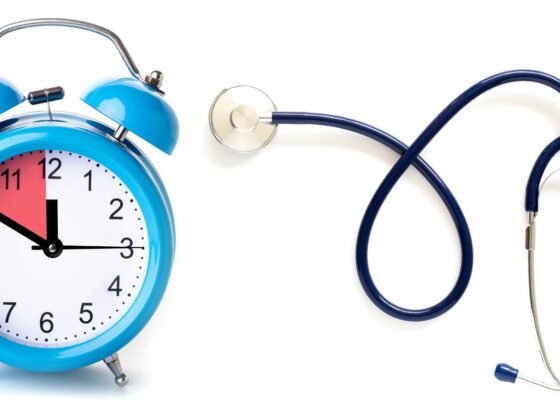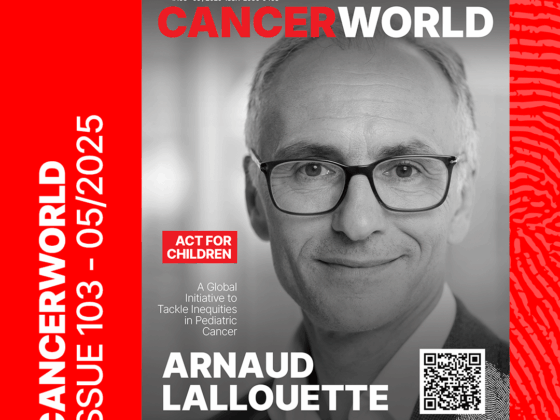The significant link that has been clearly established between obesity and risk of 13 types of cancer means that many patients in the ‘obese’ category can be offered an opportunity to improve their health and their prognosis.
Currently, more often than not, that opportunity is being missed.
Many clinicians are rightly wary of saying anything that could do more harm than good. They don’t want to make their patients feel they are to blame for their own cancer, or that they are doomed to a bad outcome because they tried and failed at losing weight and don’t have the energy or self-belief to try again. And the complexity of the relationship between obesity and cancer risk ‒ which can vary from zero to a seven-fold increased risk, and operates through many different mechanisms ‒ means many oncologists are themselves not entirely familiar with how important an opportunity addressing obesity could represent or how to help patients make the most of it.
Many patients, who would go to great lengths to play a role in their own recovery, are simply not aware of what a difference they themselves could make to reducing risk of recurrence, while improving their general health and wellbeing. They can also feel defeated and demotivated about their weight and ability to lose weight, in large part due to social stigma that blames obesity on lack of individual will power, when it is very clearly also linked to social and economic factors, the influences people are exposed to and options available to them.
If a patient feels this way then, at a time when their cancer diagnosis may already be making them feel powerless and defeated, and their treatment may be further draining their reserves of motivation and energy, it is understandable that clinicians feel reluctant to pile on the pressure by telling them they really should lose weight. On the other hand, patients often ask what they themselves can do to improve their health and well-being – and this is the opportunity!
Thus, having spent the past two decades helping to unravel how obesity links to cancer and what patients can do to reduce that risk, my message to clinicians and patients is: don’t miss this opportunity!
There are fairly easy things most patients can do to significantly lower their risk that do not hang on achieving the weight loss that may previously have eluded them. There are ways to get that message across that don’t risk undermining patients, but can help them feel more in control. And if you know about ways to improve your patients’ prognosis that they could be in a position to make use of, then passing on that information is surely the right thing to do.
To help get that message across, I summarise below 12 key points on obesity-related cancer risk, and how to reduce it, that every oncologist and cancer patient should know.
1. Obesity is overtaking tobacco as the most important risk factor for cancer
A 2016 reassessment of the link between body fatness and cancer, published by the WHO’s International Agency for Research on Cancer, found very robust evidence for a strong link between high Body Mass Index (BMI) and risk for 13 cancer types. This included a 10% raised risk for postmenopausal breast cancer, as well as raised risk for most cancers of the digestive system (30% for colorectal cancer, 50% for pancreatic cancer, 80% for renal cell, liver and gastric cardia cancer, with an almost five-fold increase in risk for oesophageal adenocarcinoma). The link is strongest for endometrial cancer, with a seven-fold increase in risk comparing ‘normal BMI’ (18.5‒24.9 kg/m2) to the highest BMI category evaluated.
2. The mechanisms involve a whole range of ‘hallmarks of cancer’
Obesity raises the risk of cancerous mutations through promoting chronic inflammation, but it can also increase cellular proliferation through raising levels of hormones or insulin-like growth factor. The link also seems to be mediated in other ways, such as through the microbiome or decreased immunity – and possibly direct interactions between adipose tissue and tumours. It’s the multiple ways in which obesity fosters a cancer-promoting environment that makes it such a powerful carcinogen.
3. Obesity emerges as a risk factor for recurrence for several types of cancer ‒ and a big opportunity to reduce risk
While the epidemiological evidence demonstrating a link between obesity and recurrence after curative treatment is not yet as strong as for primary prevention, strong links have been shown for some cancers, such as breast cancer and endometrial cancers. The translational evidence is also clear. Higher levels of obesity have a very clear association with higher levels of C-reactive protein in the body, and C-reactive protein is the primary biomarker of inflammation, and has a proven link with risk of recurrence in a number of cancers, including colon, breast and ovarian.
4. Don’t obsess about weight, it’s internal fat that really matters
Raised risk of cancer and cancer recurrence is more about body composition and metabolic function/dysfunction than about weight per se. The evidence shows that fat wrapped around the intestines and liver and other organs (intra-abdominal fat) is more relevant than fat located just under the skin (subcutaneous fat). It is this intra-abdominal fat that has strong links to many cancer-promoting substances such as cytokines, hormones, and metabolic risk factors.
5. Exercise is effective at reducing internal fat even where weight loss is minimal
Exercise intervention studies done with postmenopausal women show that, over a year of an exercise programme where weight loss was on average only around 1‒2 kg, the women lost around 10% of their intra-abdominal fat, measured by CT scan, through doing some weight training and aerobic exercise. That loss of internal fat directly translated into much lower inflammation in their bodies.
6. Helping patients with their fitness and weight can seriously improve their prognosis
Like everything in oncology, this is about looking at the whole patient and tailoring advice and interventions accordingly. Cancer treatment can be brutal, and if you are too slim ‒ or tip over to cachexia ‒ you may not be able to sustain therapy as long as someone who is slightly overweight. You do need reserves of fat and strength. For reasons that we don’t yet fully understand, higher BMI may also interact positively with immune therapy in certain cancers, such as non-small-cell lung cancer (where IARC did not find evidence for a link between obesity and risk). In general, however, the very clear link between higher BMI and relevant inflammatory, hormonal and metabolic markers indicates that helping obese patients improve their fitness and attain a healthy weight will improve their prognosis. And exercise intervention studies demonstrate the unequivocal benefit of exercise among cancer patients in relation to chronic fatigue and physical function. With recent recommendations by ASCO to increase physical activity as part of adjuvant treatment, this is a no-brainer to recommend.
7. Patients want to contribute to improving their health and survival
No one wants to be nagged about their weight, or made to feel that their cancer is somehow their fault because they allowed themselves to become overweight. Most patients, however, are very keen to get advice on what they can do to play an active part in recovering from cancer and staying cancer free. Promoting exercise is an easy way to start that conversation.
8. Doctors are in a powerful position to offer information, encouragement and advice
No patient will be unfamiliar with messages about the health benefits of the right diet and enough exercise. But the message carries much more relevance and impact when their oncologist tells them, directly, “Based on your blood markers this may be a very helpful thing to do.” What patients need then is access to services that can help them make and sustain the lifestyle changes in line with their own capacity and preferences. This is not a role doctors can take on themselves, but they can do their bit by referring patients to such services and endorsing their value.
9. What not to say – or even think or subtly imply
“You too could be fit and slim like me, and stay cancer free, if only you ate better and exercised more.” Untrue, unhelpful.
10. What you could say (depending on the cancer type, stage and patient)
“Looking after your nutrition and fitness while you are on treatment and afterwards will probably make you feel better. Doing some regular moderate strength exercises can also reduce still further the likelihood that your cancer will recur. There are services/classes/specialists who can help with that. Would you like to see what’s on offer so I can refer you?”
11. What if there are no services that can offer that support and advice?
Sadly access to services that can support patients to improve their nutrition and exercise is still very limited, despite what we know about obesity overtaking tobacco as the number one risk factor for cancer. It’s up to clinicians and the whole cancer community to highlight this massive missed opportunity to reduce cancer rates and improve survival.
12. Do no harm
Some cancers and some cancer treatments raise the risk of diabetes in people who previously had healthy metabolisms, or were prediabetic. It is important for blood values to be checked regularly, and for patients to be advised on how they can help maintain a healthy metabolism if blood markers are providing cause for concern.
Obesity is associated with a raised risk for multiple cancer types
| Cancer Site or Type | Relative Risk (95%CI) |
| Oesophagus: adenocarcinoma | 4.8 (3.0–7.7) |
| Gastric cardia | 1.8 (1.3–2.5) |
| Colon and rectum | 1.3 (1.3–1.4) |
| Liver | 1.8 (1.6–2.1) |
| Gallbladder | 1.3 (1.2–1.4) |
| Pancreas | 1.5 (1.2–1.8) |
| Breast: postmenopausal | 1.1 (1.1–1.2)§ |
| Corpus uteri | 7.1 (6.3–8.1) |
| Ovary | 1.1 (1.1–1.2) |
| Kidney: renal‑cell | 1.8 (1.7–1.9) |
| Meningioma | 1.5 (1.3–1.8) |
| Thyroid | 1.1 (1.0–1.1)§ |
| Multiple myeloma | 1.5 (1.2–2.0) |

§The figures shown are for relative risk per 5 BMI units
Source: The data were published in B Lauby-Secretan et al. (2016) Body Fatness and Cancer ‒ Viewpoint of the IARC Working Group. New Engl J Med 375:794-798












